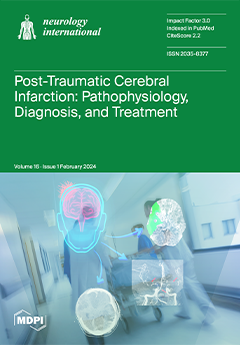Open AccessEditor’s ChoiceSystematic Review
Pulmonary Function Tests Post-Stroke. Correlation between Lung Function, Severity of Stroke, and Improvement after Respiratory Muscle Training
by
Fotios Drakopanagiotakis, Konstantinos Bonelis, Paschalis Steiropoulos, Dimitrios Tsiptsios, Anastasia Sousanidou, Foteini Christidi, Aimilios Gkantzios, Aspasia Serdari, Styliani Voutidou, Chrysoula-Maria Takou, Christos Kokkotis, Nikolaos Aggelousis and Konstantinos Vadikolias
Viewed by 2268
Abstract
Stroke is a significant cause of mortality and chronic morbidity caused by cardiovascular disease. Respiratory muscles can be affected in stroke survivors, leading to stroke complications, such as respiratory infections. Respiratory function can be assessed using pulmonary function tests (PFTs). Data regarding PFTs
[...] Read more.
Stroke is a significant cause of mortality and chronic morbidity caused by cardiovascular disease. Respiratory muscles can be affected in stroke survivors, leading to stroke complications, such as respiratory infections. Respiratory function can be assessed using pulmonary function tests (PFTs). Data regarding PFTs in stroke survivors are limited. We reviewed the correlation between PFTs and stroke severity or degree of disability. Furthermore, we reviewed the PFT change in stroke patients undergoing a respiratory muscle training program. We searched PubMed until September 2023 using inclusion and exclusion criteria in order to identify studies reporting PFTs post-stroke and their change after a respiratory muscle training program. Outcomes included lung function parameters (FEV
1, FVC, PEF, MIP and MEP) were measured in acute or chronic stroke survivors. We identified 22 studies of stroke patients, who had undergone PFTs and 24 randomised controlled trials in stroke patients having PFTs after respiratory muscle training. The number of patients included was limited and studies were characterised by great heterogeneity regarding the studied population and the applied intervention. In general, PFTs were significantly reduced compared to healthy controls and predicted normal values and associated with stroke severity. Furthermore, we found that respiratory muscle training was associated with significant improvement in various PFT parameters and functional stroke parameters. PFTs are associated with stroke severity and are improved after respiratory muscle training.
Full article
►▼
Show Figures






